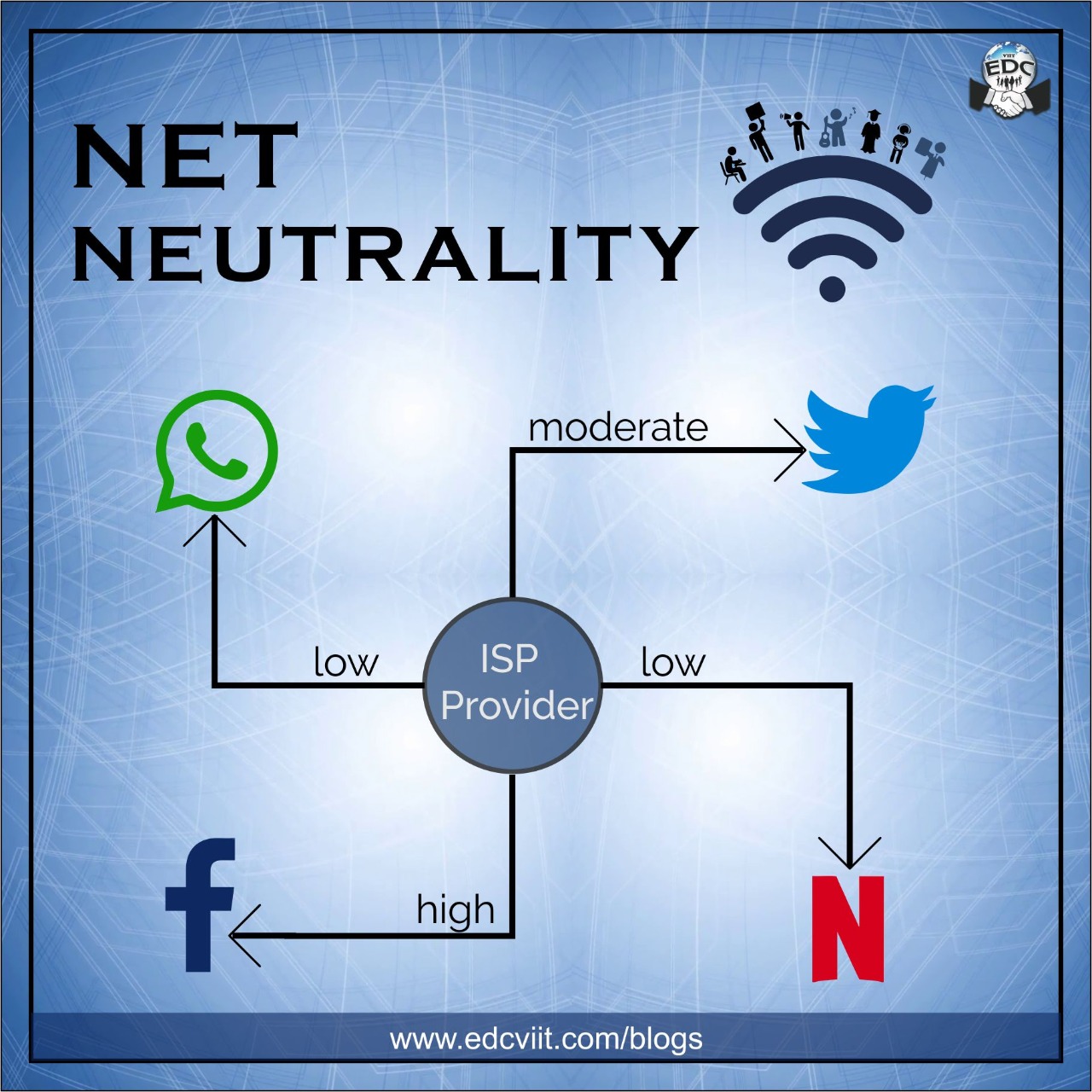Net Neutrality
On hearing the phrase “social media” most people think of rather trivial activities such as sharing family photos on Facebook or uploading baby videos on YouTube. But social media has graduated from just being a personal, consumer-oriented paradigm to something that has a huge impact on businesses. Organizations of all sizes, from small firms to large multi-national corporations, are now using social media for improving their businesses. The market for social media tools, software and services are expected to reach $189 billion by 2020.

The trends within India are not too different from global trends. India has a greater number of Internet users and social media users than cable and satellite households. About 241 million people access the popular social networking site Facebook every month in India. And this growth is not limited to Facebook. Online video sharing site, YouTube is witnessing a huge growth too. About 245 million people watch videos on YouTube, monthly. While there are huge perceived benefits of social media, many are cautioning against excessive hype.
Back in 2014, some of these social media platforms have been seen partnering with Internet Service Providers (ISPs) in India and exploiting the ISPs customer base. The ISPs happened to provide data or higher speeds to their partner social media platform, free of charge. This made the competition between the ISPs and social media platforms highly unfair. This also made the customers switch between several ISPs according to their social needs!
This brought up the concept of Network Neutrality. This term refers to the principle that Internet service providers should enable access to all content and applications regardless of the source, and without favouring or blocking particular products or websites.
The whole debacle started in 2011,
- - When Tata DoCoMo announced its plans for free unlimited WhatsApp, Facebook and Twitter usage for Rs.15,
- - When Vodafone started providing similar packs for WhatsApp,
- - When Airtel provided completely free data usage for Facebook.
The authorities responsible to keep a watch over these activities and regulate them are the Federal Communications Commission (FCC) and the Telecom Regulatory Authority of India (TRAI).
The debate on network neutrality in India gained public attention in December 2014, after Airtel, a mobile telephony service provider in India, announced additional charges for making voice calls (VoIP) from its network using apps like WhatsApp, Skype, etc. In March 2015, the TRAI released a formal consultation paper where the consumer can voice their opinions on the topic and by 24th April 2015, they received over a million emails. On 8th February 2016, TRAI passed the "Prohibition of Discriminatory Tariffs for Data Services Regulations, 2016", prohibiting telecom service providers from levying discriminatory rates for data. This move was welcomed by millions of Indians and also by people from other countries who are fighting or fought for net neutrality.
As the aftermath of these regulations, the ISP giants lost their partnership with the social media platforms indefinitely. The lack of these regulations made the consumers go through a dilemma of choosing between service packs and service providers and had to adjust to the network service providers’ policies of using social media platforms. With these regulations, no telecom business promotes any specific social media platform, playing fairly with the competition.
Although… Establishing Network Neutrality seemed fair, didn’t it? Of course, it did. But there are certain disadvantages to Network Neutrality as well. Several applications like Netflix, Google Phone, Skype and YouTube require enormous amounts of data to be loaded at higher speeds. The regulations prohibit the ISPs to provide higher speeds for the applications that actually require it. Another con of net neutrality focuses on profitability. Currently, ISPs provide free or reduced-cost internet services for many people who are considered impoverished. This means that the ISPs have to provide equal and high-speed data to the person who doesn’t need it. In other words, the company seems to be wasting their resources over the said person. But of course, the ISPs cannot discriminate anybody on this basis and hence have to find other ways to make a profit over this category of customers.
On the other hand, Network Neutrality also protects innovation by keeping big companies from paying to get special treatment and putting start-ups at a disadvantage. More importantly, it also protects free speech, by prohibiting ISPs from giving preferential treatment to some content, or, worse, blocking or throttling access to other content. Perhaps most importantly, true net neutrality would require reclassifying ISPs from their current classification to something more like a utility, which would mean that ISPs would be required to provide to any customer willing to pay for them, regardless of credit, type of business or the user’s assets.
By looking at the trends of data usage, high-speed data communication is now mainly required in companies and start-ups that deal with a large amount of data. These needs are fulfilled by other forms of data providers such as fiber and satellite communication and broadband networks. Despite the disputes over the topic, the pros weigh far heavier than the cons and the current 4G speeds of the Indian providers satisfy the majority of the internet using community.